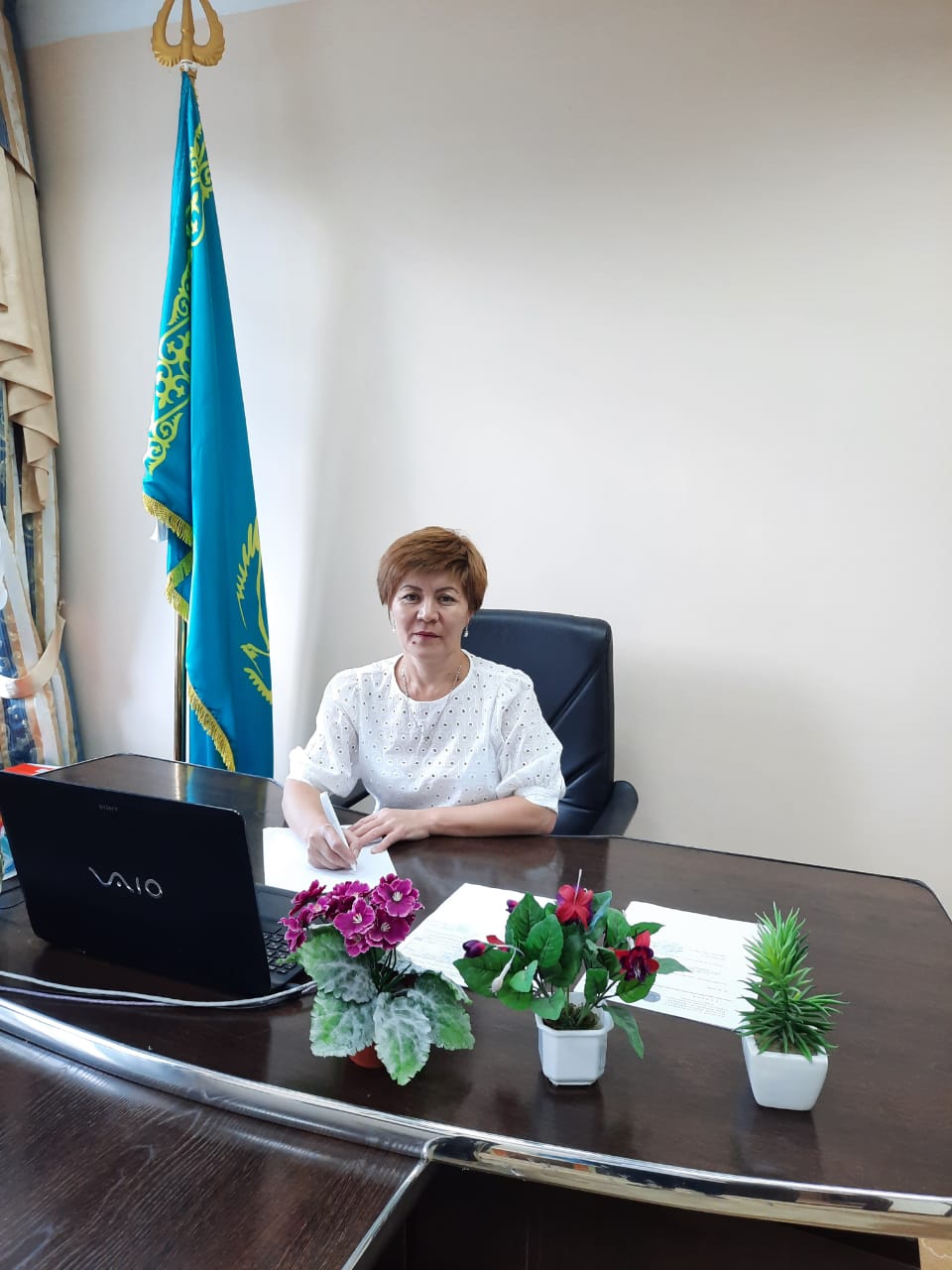ТОО «Школа-Гимназия и Колледж КазГЮУ»
2020-2021 учебный год
«УТВЕРЖДАЮ»
Методист колледжа
___________К.К.Казиева
«_____» ________2020 г.
№ Занятия: 40
Тема занятия: Analyzing the specific features of animals
Наименование модуля /дисциплины: Иностранный язык
Подготовил педагог: Каланчукова Т.К.
Дата: 01.03.2021
Курс, группа: I, 103
Место проведения: Онлайн - урок на платформе Zoom
Тип занятия: Комбинированный
Цель: Формирование у обучающих способностей свободного устного и письменного общения, воспринимать на слух иноязычную речь, развивать полиязычную и поликультурную личность.
Перечень профессиональных умений, которыми овладеют обучающиеся в процессе учебного занятия: Перевод текста на русский/казахский язык, умение выражать свою мысль на иностранном языке, умение отвечать на вопросы, обогащение словарного запаса.
Учебно-методическое оснащение, справочная литература: Electronic library, electronic dictionary
- Jenny Dooley, Bob Obee. Aspect for Kazakhstan Grade 10 (Grammar Schools) Student`s book. -Express Publishing, 2019
- Jenny Dooley, Bob Obee. Aspect for Kazakhstan Grade 10 (Grammar Schools) Workbook & Grammar book. -Express Publishing, 2019
- Jenny Dooley, Bob Obee. Aspect for Kazakhstan Grade 10 (Grammar Schools) Teacher`s book. -Express Publishing, 2019
- Голицынский Ю.Б. Грамматика: Сборник упражнений.7-е изд. – М., 2012
5.Израилевич Е.Е., Качалова К.Н. Практическая грамматика английского языка с упражнениями и ключами. – М .: Юнвес Ладком, 2011
6.Израилевич Е.Е., Качалова К.Н. English: практическая грамматика английского языка с упражнениями и ключами. – М .: Каро БАЗИС, 2014
Техническое оснащение, материалы: Обучающая платформа Edupage, Zoom, компьютер, ноутбук, презентация
Ход занятия
- Warming up: 1) Organization moment – 1-2 min
- Good morning, dear students! How are you? I’m glad to hear it!
2) Checking up the home task: - 5 min
- Your home task was to express your opinion about Leonardo da Vinci’s saying
- Presentation
There are a lot of animals on our planet. They can be wild and domestic. Wild animals are those animals, which live in nature without people. Wolves, foxes, lions are wild animals.
Domestic animals are animals, which live with people and not really scary. People always call them “pets”. Cats, dogs, sheep are domestic animals.
People divide animals into four groups – reptiles, birds, insects and mammals.
Mouse - [maʊs] – мышь
Fly - [flaɪ] – муха, летать
Whale – [weɪl] - кит
Beetle – [biːtl] - жук
Seal – [siːl] – тюлень, котик
Eagle – [iːgl] - орел
Squirrel – [ˈskwɪrəl] - белка
Butterfly – [ˈbʌtəflaɪ] – бабочка, мотылек
Toad – [təʊd] - жаба
Tuna – [ˈtjuːnə] - тунец
Jaguar – [ˈʤægjʊə] - ягуар
Iguana – [ɪˈgwɑːnə] - игуана
Salmon – [ˈsæmən] – лосось, семга
Chameleon – [kəˈmiːlɪən] - хамелеон
Bear – [beə]- медведь
Mammals – [ˈmæməl] - млекопитающие
Reptiles – [ˈreptaɪl] - рептилии
Amphibians – [æmˈfɪbɪən] - амфибии
Rodents – [ˈrəʊdənt] - грызуны
Insects – [ˈɪnsekt] - насекомые
Gills – [ʤɪlz] - жабры
Fins – [fɪnz] – плавники, ласты
Wings – [wɪŋz] - крылья
Feathers – [ˈfeðəz] – перья, оперение
Scaly skin – [ˈskeɪlɪ skɪn] – чешуйчатая кожа
Creatures – [ˈkriːʧəz] - существа
Lay eggs – [leɪ egz] – откладывать яйца
Tail – [teɪl] - хвост
Horn – [hɔːn] - рог
Blowhole – [ˈbləʊhəʊl] – дыхало, продувные отверстия
Shell – [ʃel] - ракушка
Openings – [ˈəʊpnɪŋ] - отверстия
Limbs – [lɪm] - конечности
Steer – [stɪə] – управлять, направлять
Bottom – [ˈbɒtəm] - дно
Claws – [klɔːz] – когти, клешня
Antennae – [ænˈtenə] – щупальца, усики
Sting – [stɪŋ] – жало, ужалить
Beak – [biːk] – клюв, хоботок, носик
III. Practice
1) a. Read the determinations:

- Which type of animals are each of the animals below?
|
Mammals |
reptiles |
amphibians |
rodents |
birds |
fish |
insects |
|
bear seal whale kangaroo monkey jaguar |
Crocodile iguana chameleon |
toad frog |
Mouse squirrel |
parrot eagle |
tuna salmon |
Fly Beetle butterfly |
2) Choose the correct words. Check in your dictionary


Task 3. Read the text
Bats are strange creatures: they have legs and feet but they cannot walk. So, they fly like birds and they are the only animals that can fly. Bats are most common in the tropics, where they can find food all the year round. Most bats are brownish in colour, but others are blackish, orange, grey, greyish green, greenish white, white, yellowish, and some are even spotted.
There are fruit-eating bats and insect-eating bats. There are also bats that catch and eat small fish. And there are bats that feed on blood.
Vampire bats are the only animals that feed on blood. These small tailless creatures live in Central and South America. With their two sharp upper teeth vampire bats make a small hole in the skin of another animal and suck blood from it. They sometimes bite human beings, too, but it happens very seldom. The wound they give their victims heals quickly, but these bats may carry rabies, that is why people are afraid of them.
Bats are usually active at night, when most people are asleep. In the daytime they hang close together in their attics, caves, or other dark places where they make their homes.
Bats hang upside down when they are resting. Only when evening comes do they begin to move. They go out of the hole into the night above to search for food. In the morning they come home from their night of work to sleep until the next night.
Bats have very few enemies. Some hawks, owls, and snakes can catch them, but it isn’t an easy thing for them.
Bats live as long as 10 years, some species live longer. Many strange and false legends have been told about bats. In Western countries people fear them and think that they bring bad luck. In China and Japan bats are symbols of good luck, happiness, and long life.
Words for the text:
echo — эхо
obstacle — препятствие
brownish — коричневатый (ср. также greenish — зеленоватый, и т.п.)
spotted — пятнистый
suck — сосать, высасывать
heal — заживать
carry rabies — зд. переносить, разносить бешенство
upside down — вверх ногами, вверх тормашками
hawk — ястреб
species — виды
- Reflection:
What have you learned today?
- Home task:
Collect information about other types of animals and make an analyze




















